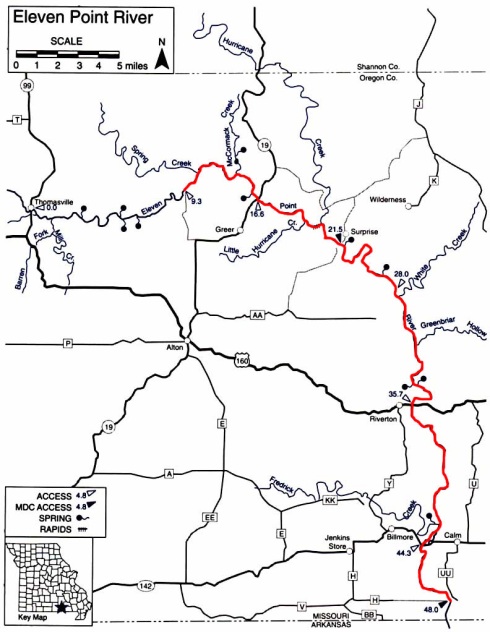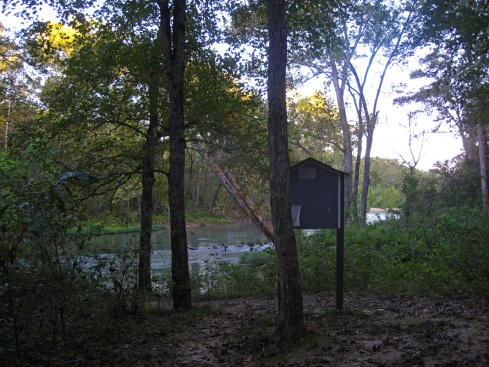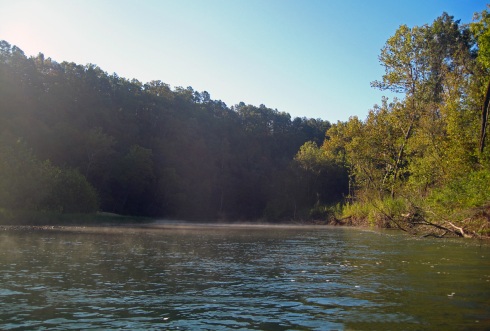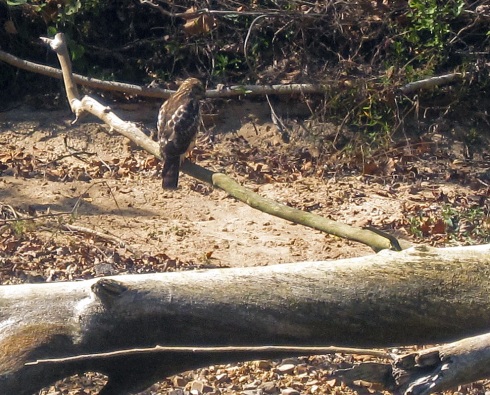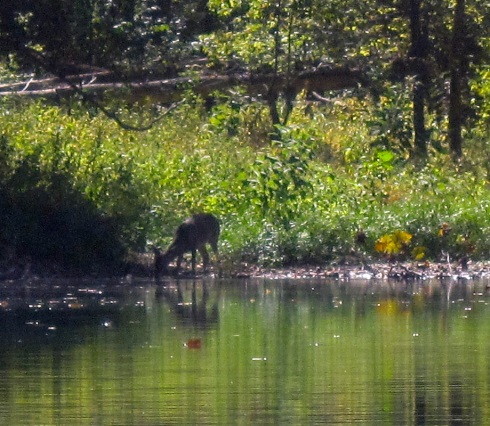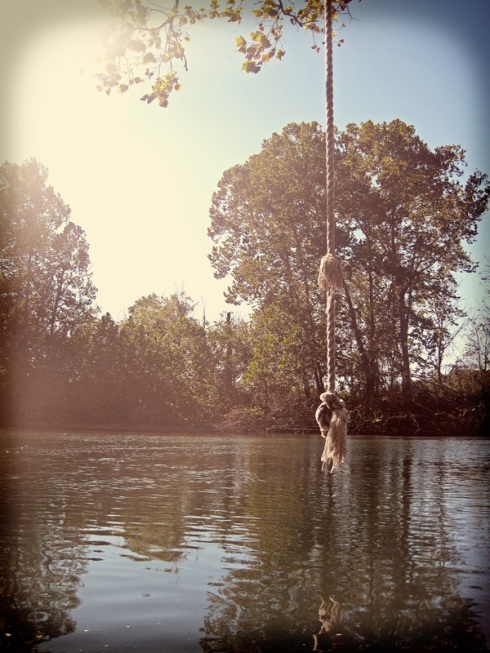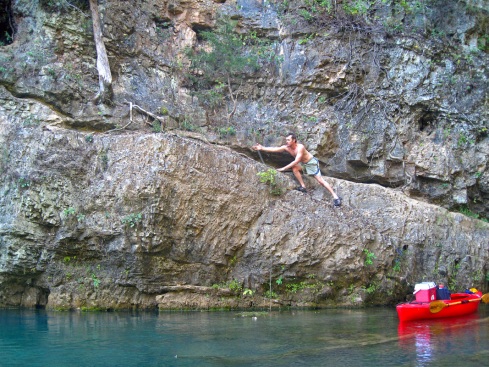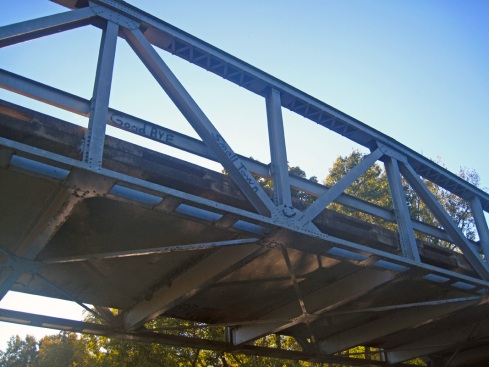Cedar Grove to Two Rivers
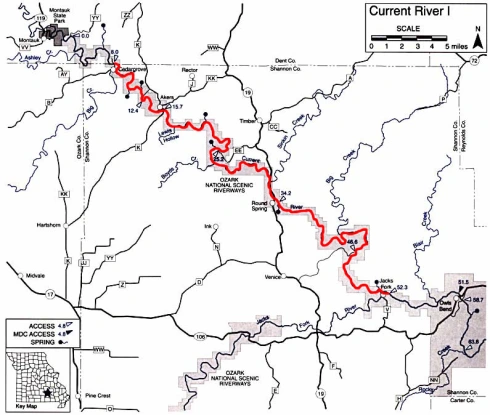
Current River
Shannon County, Missouri
Wednesday, September 28 – Thursday, September 29
44 Miles
In celebration of our wedding anniversary, DW and I completed our first overnight kayak trip. After all, what is more romantic than sleeping on a gravel bar? We had spent the previous weekend dragging out all our backpacking gear, which hadn’t been used in almost 6 years, sorting and packing it all into small dry bags. We packed the boats and did a test run on the Meramec near home. Everything seemed to fit well and the boats were well balanced, so we unpacked it all into the car and headed down to the Current River for our first overnight trip with kayaks. We hadn’t floated the Current in nearly 2 years. Back when we only had the canoe we had done a couple week-long trips down to Van Buren, so we are pretty familiar with the Current when it comes to overnight trips. We scheduled a car shuttle from the outfitter at Two Rivers. It was a little pricey, but the drive from Cedar Grove to the take out is over an hour long. Once we got to the access we repacked everything in the kayaks.
DW took the red Perception kayak instead of his regular blue kayak. His blue Perception Montour is very narrow and can’t hold much. The red Perception Prodigy is very wide and there is plenty of room in the front and back to stuff a bunch of gear. My Dagger Axis 10.5 turned out to be nearly perfect for overnight packing. There was plenty of room in the front to slide long things (extra paddle, camp seat and several small bags) and the sealed hull held a lot more than I thought it would. I did have to be careful to balance the front and back of the boat so both ends turned at the same rate. Otherwise the front would turn quickly while the back just sat there. We also bought a bunch more small fabric dry bags. The regular vinyl dry bags are hard to stuff into small spaces (too much friction against the plastic boat) and the fabric ones work well as long as you don’t submerge them in water for a long time.
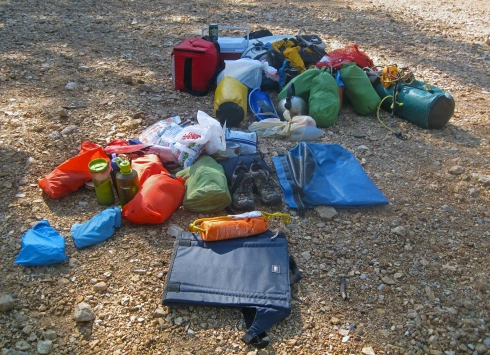
All our gear before packing it in the boats
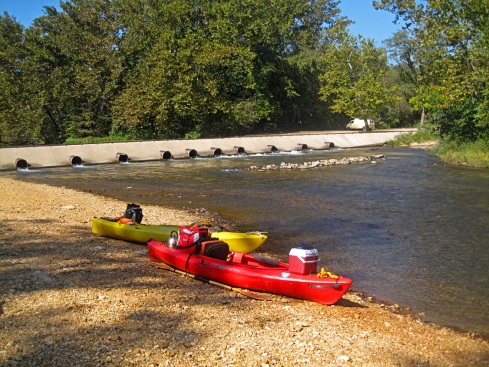
Packed boats ready to launch at Cedar Grove
The biggest hurdle to overnight kayaking is alcohol. You really can’t pack much beer on a kayak and drinking hard alcohol all day can turn into a kayak-flipping disaster. We decided two days at a time was feasible to carry beer. If we did more than two days we would carry hard alcohol and soda and just not drink as much and start drinking late in the day. Of course you could always decided to not drink at all, but that would eliminate most of the challenge!
We launched our boats from Cedar Grove at 11am on Wednesday morning. It was a little later than we wanted to start, but still feasible to make it to our halfway point, Pulltite Spring 18 miles downriver. When we tested our boats at home we did not have all the food & beer packed, so the kayaks were a little more heavy than we anticipated. So now we’re paddling heavy boats 18 miles in 7 hours. Better paddle hard!
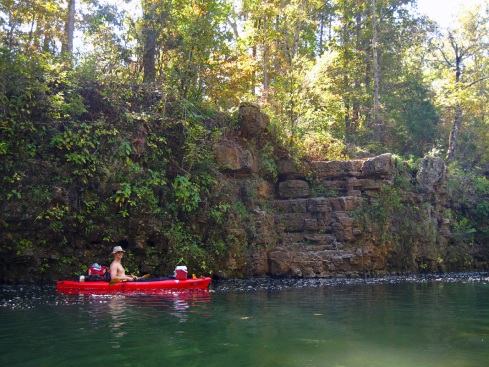

Medlock Spring spills from the rocks
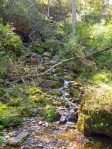
Medlock Spring
Our first stop was at Medlock Spring. Medlock is a small spring that gushes from tiny opening in the rocks and tumbles down to the river. There is also a cave up above the spring opening, but we did not explore as we had 16 miles left to paddle.
Two miles down from Medlock is Welch Spring. Welch Spring is in the top 10 of Missouri’s largest springs and has a powerful flow. The spring gushes out of a cave opening and runs into the river with such force that it overtakes the current of the stream. Welch spring was originally homesteaded in 1855 by Thomas Welch, who then ran a grist mill on the spring until the turn of the 20th century. Then it was bought by Dr. Diehl in 1913. Dr. Diehl built a hospital over an opening in the cave and planned to attract patients suffering from breathing ailments to the healing spring waters and cave vapors. His project never really took off as the roads in the Ozarks were little more than rough trails at the time and it was hard to attract patients to the middle of nowhere. The walls of the hospital building still stand at the edge of the spring. It’s neat to wander around the building and imagine what it would have been like to be treated for consumption in the middle of the wilderness in 1915.

Welch Spring
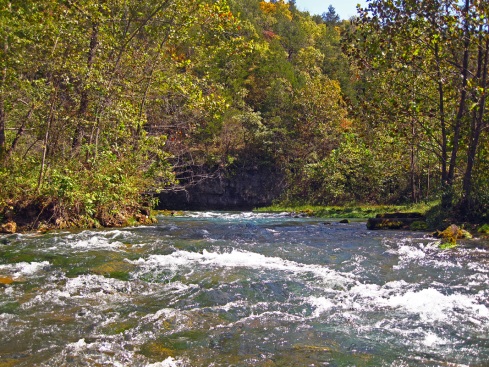
Welch Spring viewed from the river

Three miles down from Welch is Akers Ferry. This is the last operational ferry in the Ozark National Scenic Riverways. There is also an access and camp store on the left side of the river. The ferry runs during daylight hours and is only $4 per vehicle to cross. It has been in operation for over 50 years but I have only seen it running once so I don’t think it gets too much traffic these days.

Akers Ferry
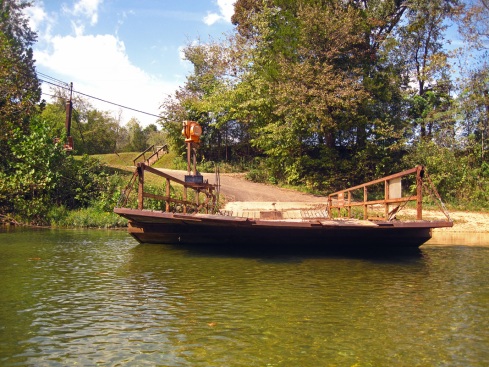
The river ferry at Akers
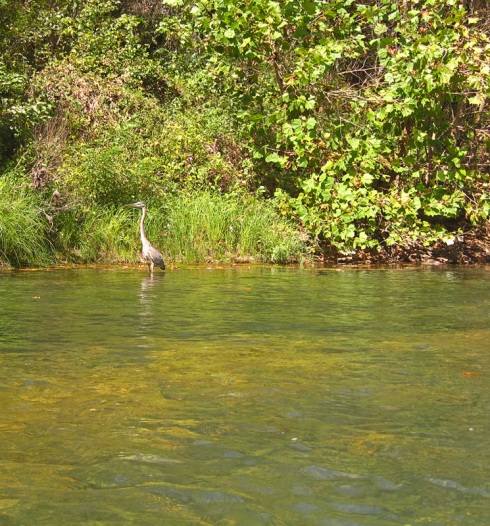
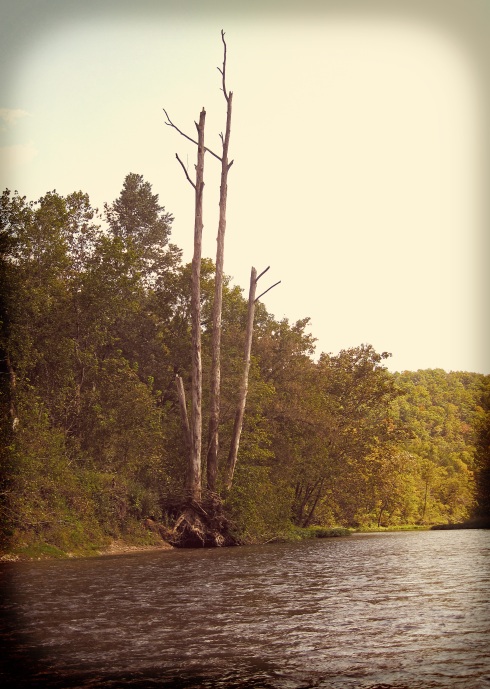
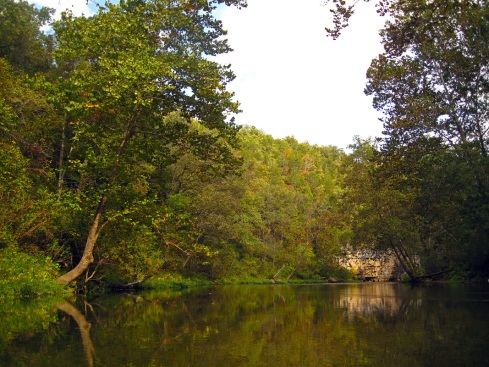
After Akers we stopped for a short lunch break and a swim. It was just barely warm enough to get in the water without being uncomfortable. This would be my first and last swim of the entire trip as the rest of the week was cooler and the water didn’t get any warmer! After lunch we continued our mad paddle to the halfway point. At one point we saw a river otter crossing the water with a large crawdad in its mouth. You don’t see too many otters on the river. They are pretty reclusive and don’t come out much around humans, so it’s really cool to see one on a quiet day.


DW paddles into Cave Spring
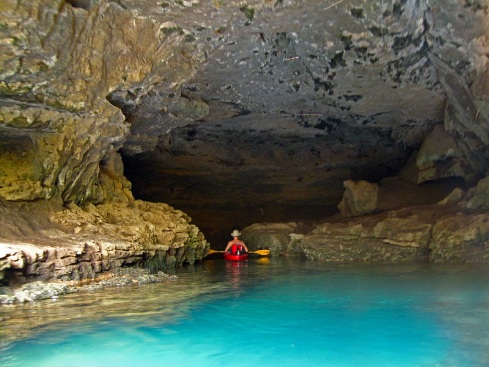
Cave Spring
Five miles upriver from Pulltite is Cave Spring. This cave is in a bluff on the river bank so you can paddle into it. The water at the back of the cave is 120 ft. deep and comes from nearby Devil’s Well. Devil’s Well is a deep, water-filled sinkhole about a mile away from the cave. It’s pretty neat as far as sinkholes go and is worth a visit if you’re in the area.

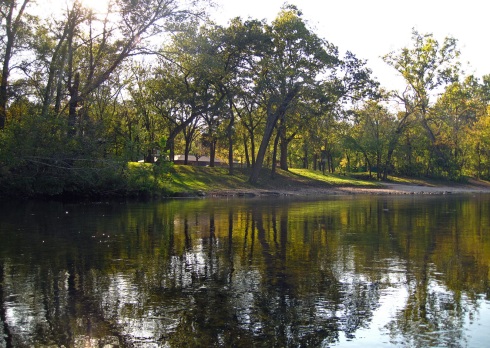
Pulltite access
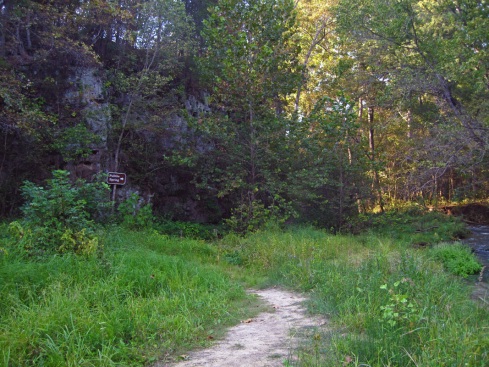
The trail to Pulltite Spring

The cabin at Pulltite Spring
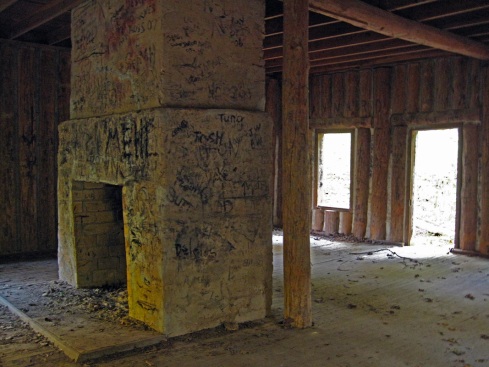
Inside the cabin

Pulltite Spring
Around 4:30 we finally passed Pulltite access. We stopped at the spring, which is across the river and 3/4 mile down from the access. Pulltite is one of our favorite areas on the Current. The campground isn’t very big and can get pretty crowded in the summer, but if you’re lucky enough to camp there in the off season its peaceful and picturesque. There are numerous campsites along the river and a short hiking trail goes along the stream at the back of the campground. Pulltite Spring is one of the most beautiful springs in the area. A short trail leads along the spring branch from the river. Right before the spring hole is an old cabin built in 1913 by the spring’s owners. The cabin is built in the French style with logs placed upright to avoid having to notch them. My favorite thing about the cabin is the large fireplace in the center of the room; it looks so cozy! Just up the trail from the cabin is the spring. Pulltite, like most Ozark springs, was once the site of a grist mill. The story is that Pulltite got its name because the horses had to pull tight to haul the grain up the steep mountain from the valley floor. The wagon drivers then had to brake the back wheels with a log and pull tight on the reins to keep the wagon from hurtling down the mountain. Pulltite Spring used to have 3 dams to run the mill, but they were all dismantled around the turn of the 20th century when the mill stopped production.
Pulltite Spring was our actual half way point. After we explored the spring we got back in the boats and started looking for a good gravel bar to camp. It seems that everyone floating that day was camping on the river overnight. We passed two or three good sites that were already occupied. DW and I always joke that the perfect camping spot is just around the bend from wherever we decide to stop for the night. It seems we always get on the river in the morning, paddle around the bend and there is a large gravel bar across from a towering bluff that looks much nicer than where we just came from. Since we can’t carry fire wood on a kayak a site with ample access to dead wood was a bonus. We kept paddling, looking for the perfect spot. Right around dusk we saw a spot just down from a bluff that had a large stack of dead wood from the previous occupants. We decided we weren’t going to get anything better this close to dark so we unpacked the boats and set up camp. DW got the fire started and I set up the tent. Then we got out our fancy camp chairs (legless so they take up little room and give plenty of opportunity to commune with creepy crawlers), cooked dinner on our backpacking stove and settled in for the night.

The bluff upriver from camp
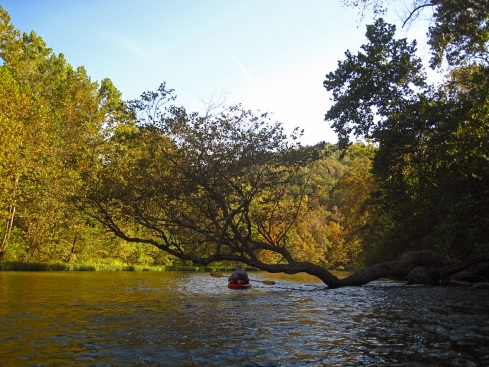
DW paddles under a precarious tree

Sinking Creek

The night passed uneventfully and we woke up the next morning, ate cold cereal, put on our cold float clothes and packed camp back into the boats. We were on the river by 9am. It’s lucky we stopped for the night where we did because we did not see another suitable gravel bar for miles. It would have been past dark by the time we found another campsite! The first landmark we passed was Sinking Creek on the left side of the river. There is a conservation area campground here and it looks like it has been improved since the last time we were in the area. Sinking Creek is popular in the summer as it is cheaper than the state parks or national forest campgrounds along the river.
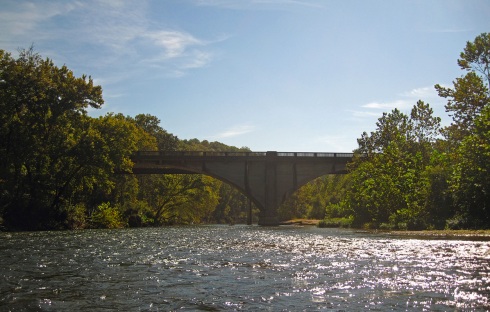
Hwy. 19 bridge at Round Spring
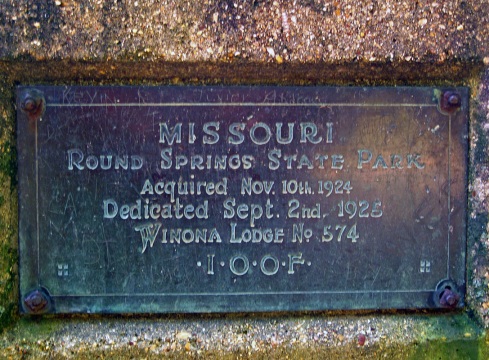
Round Spring State Park
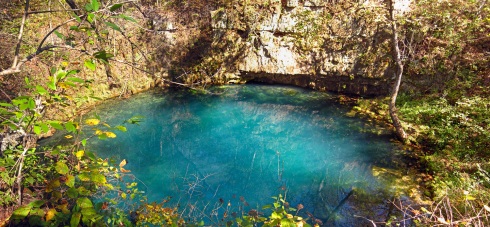
Round Spring
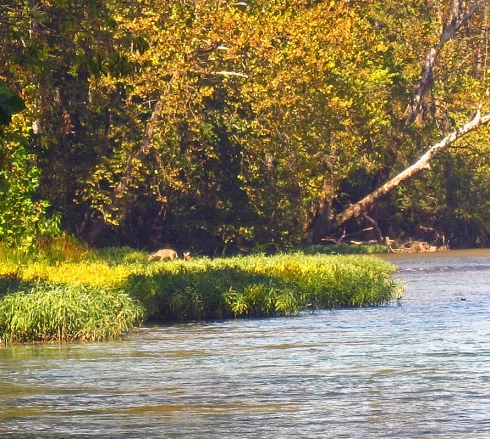
Deer graze on the river bank
A few miles down from Sinking Creek is Round Spring. Round Spring is a nearly perfect circular depression in the hill with an average flow of 26 million gallons per day. Local legend says that an angry Indian chief stomped the ground until the hollow formed and filled with water. Round Spring was one of Missouri’s first state parks. Even though it is still referred to as a state park, round spring was incorporated into the National Park system as part of the Ozark National Scenic Riverways in the 1960s.
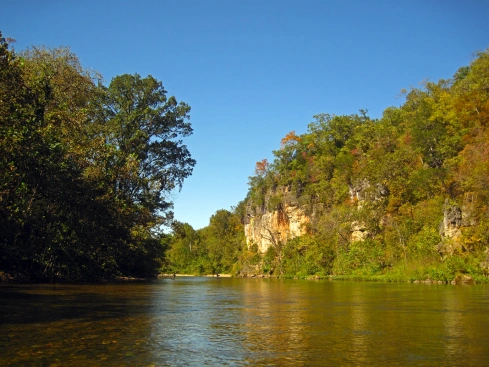
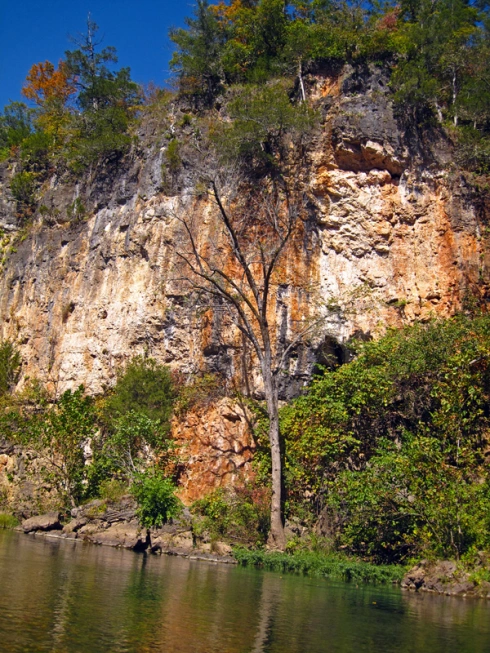
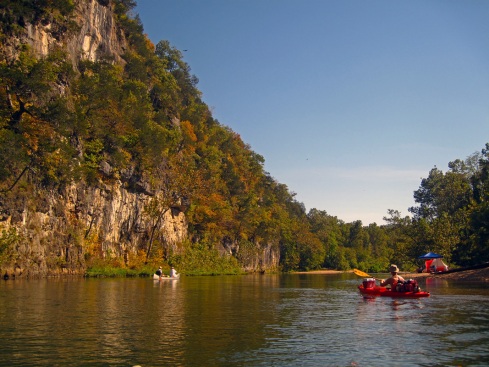
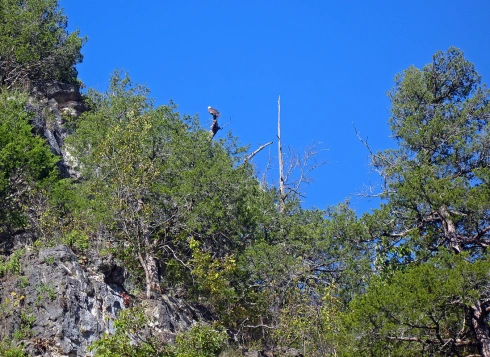
A Bald Eagle above the bluff
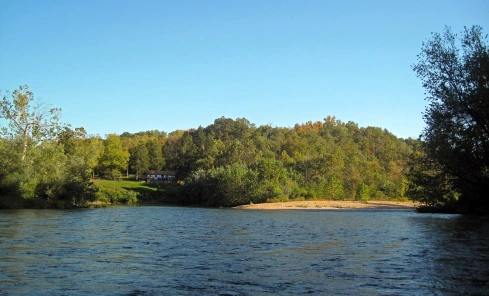
Two Rivers
The remainder of the day went by quickly and without much excitement. We did see a couple of deer grazing on the river bank and a bunch of bald eagles flying over the bluffs. We stopped for lunch at a random picnic table on a large gravel bar. It was an obvious fish gigging access as the table was littered with fish scales. We saw few people on the river and those we did see were all camping overnight. I guess the weekday is for overnight floaters! We reached Two Rivers, where the Jack’s Fork enters the Current, around 4pm. We unpacked the boats, loaded up and drove for about an hour to the Eleven Point to continue our next two days of floating.
Critter Count: Turtles, Blue Herons, Green Herons, Kingfishers, Ducks, 1 Hawk, 4 Bald Eagles, 2 Deer, 1 River Otter with Crawdad Lunch Special
Tags: cedar grove, current river, float trip, Kayaking, missouri, overnight kayak camping, two rivers















